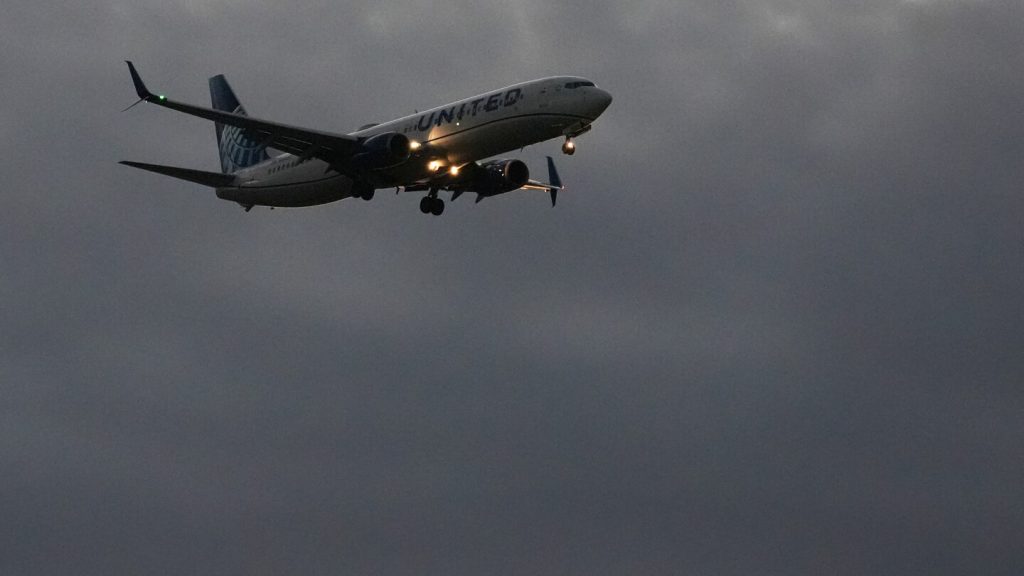Listen to the article
Anxious passengers across the United States faced significant travel disruptions Friday as government-ordered air service reductions took effect, creating long lines and flight delays at major airports nationwide.
The Federal Aviation Administration (FAA) has begun implementing a phased 10% reduction in flights at 40 major airports spanning more than two dozen states, including key hubs such as Atlanta, Dallas, Denver, Los Angeles, Miami and Newark. The cuts are being introduced to alleviate pressure on air traffic controllers who have been working without pay during the ongoing government shutdown.
“It was snaking around all different parts of the regular area,” said Cara Bergeron, who arrived at Houston’s George Bush Intercontinental Airport at 4:30 a.m. Friday and spent nearly two hours navigating the unusually long lines before reaching her gate for a flight to Atlanta. After landing, her plane remained on the runway for approximately 45 minutes.
Another traveler, 18-year-old Mya Pipkin, described a similar experience at the Houston airport, where she arrived at 2 a.m. to find TSA lines at a standstill. “People were even lying on the floor as if they’d been stuck there for hours,” Pipkin said after finally reaching Atlanta.
The impact has been immediate and widespread. By early Friday, more than 815 flights had been canceled nationwide, according to flight tracking service FlightAware. Major carriers quickly announced significant reductions to their schedules. Delta Air Lines reported cutting approximately 170 flights on Friday alone, while American Airlines planned to eliminate 220 daily flights through Monday.
Aviation analytics firm Cirium reported that 3% of all scheduled U.S. flights for Friday—totaling 748 flights—had been canceled as of 6 a.m. Eastern Time. Additionally, about 1.7% of Saturday’s flights had already been canceled, suggesting the disruptions will continue through the weekend.
The reductions are being implemented in stages, beginning with 4% of flights at targeted airports and gradually increasing to 10%, per the FAA’s directive. United Airlines confirmed it would cut 4% of its weekend flights based on the agency’s guidance.
The cuts come as air traffic controllers have increasingly called in sick during the shutdown, contributing to staffing shortages that have affected air travel for weeks. According to the National Air Traffic Controllers Association, most controllers have been working mandatory overtime six days a week without pay during the shutdown.
The scope of the disruption is substantial. Industry analysts estimate the cuts could affect up to 1,800 flights and approximately 268,000 passenger seats combined. Both United and Delta have announced they will offer refunds to travelers who choose not to fly, even for tickets that wouldn’t normally be refundable under their policies.
The impact extends beyond passenger travel. Two airports with major package distribution centers are included in the FAA’s reduction list. FedEx operates a significant hub at Memphis International Airport in Tennessee, and UPS maintains a major facility in Louisville, Kentucky—where a deadly cargo plane crash occurred earlier this week. These reductions could potentially disrupt package deliveries across the country.
There has been some relief for passengers, however. United Airlines reported Friday that it had successfully rebooked more than 80% of affected travelers, with the majority scheduled to reach their destinations within four hours of their original plans. American Airlines reported similar success in rebooking customers.
Travel experts are advising passengers to check their flight status before heading to the airport and to prepare for potential delays and disruptions. With the reductions set to continue and possibly increase to the full 10% in the coming days, travelers should remain vigilant about monitoring their flight information and maintaining flexibility in their plans.
As the shutdown continues with no immediate resolution in sight, the strain on the U.S. air travel system is likely to persist, potentially causing further disruptions for travelers in the busy holiday travel season ahead.
Fact Checker
Verify the accuracy of this article using The Disinformation Commission analysis and real-time sources.




12 Comments
Interesting to see the impact of the government shutdown on air travel. I’m curious to learn more about the rationale behind the 10% flight reduction and how it will affect passengers in the long run.
The FAA’s move to reduce flights seems like a prudent measure to alleviate pressure on air traffic controllers during the shutdown. But it’s certainly causing disruptions for travelers.
This highlights the cascading effects the government shutdown can have on critical infrastructure like air travel. I hope a resolution is reached soon to minimize further disruptions.
Agreed. The longer the shutdown drags on, the more it could impact the broader economy beyond just air travel.
It’s alarming to see the government shutdown causing such significant disruptions to air travel. I hope a compromise can be reached soon to restore normal operations and minimize further inconvenience to passengers.
Agreed. The shutdown is creating unnecessary hardship for travelers and creating a lot of uncertainty. A swift resolution would be in everyone’s best interest.
This is a stark reminder of how government dysfunction can have real-world consequences for citizens. I hope a bipartisan solution is reached soon to restore normal airport operations.
Agreed. The shutdown is causing unnecessary hardship for travelers and airport workers who are just trying to do their jobs.
The 10% flight reduction is a concerning development, but it’s understandable that the FAA needs to take proactive steps to manage the situation. Hopefully this is a temporary measure until the shutdown is resolved.
This highlights the broader economic impacts of the shutdown. Disruptions to air travel could have ripple effects on businesses and the overall economy.
The long lines and delays sound incredibly frustrating for passengers. I wonder if there are any contingency plans in place to help mitigate the impact on travelers during this time.
Airlines should be communicating proactively with customers to help manage expectations and provide updates on the situation. Flexibility will be key to minimize disruptions.